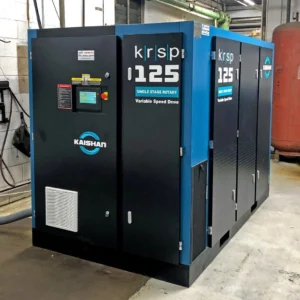Compressed Air System — comprehensive guide for MEP construction & MEP services

Following is an actionable, step-by-step guide to a compressed air system drafted particularly for MEP construction, MEP services, mechanical electrical & plumbing teams, and MEP engineers employed in MEP engineering / MEP civil engineering projects. I will discuss components, design & sizing methodology, installation guidelines, controls, commissioning, operation & maintenance, energy efficiency, and safety – all whilst employing naturally the keywords you provided.
What a compressed air system
A compressed air system transforms electrical (or mechanical) energy into stored pneumatic energy — pressurized air utilized to power tools, actuators, controls, instrumentation and process equipment. In MEP building and MEP services, compressed air is handled as a utility (just as HVAC chilled water or fire water) and is coordinated between mechanical, electrical & plumbing disciplines to provide dependable supply, correct drainage, and safe distribution.
Major parts
Compressor(s) — rotary screw, reciprocating (piston), or centrifugal based on capacity and duty cycle.
Aftercooler — cools discharge and condenses water vapor.
Air receiver (storage tank) — smoothes pressure variations, offers short-term reserve.
Drying & filtration — refrigerated dryer, desiccant dryer, and particulate/coalescing filters to satisfy process air cleanliness.
Condensate disposal — traps, separators, and automatic drains connected to building plumbing (plumbed under MEP in coordination work by engineers).
Distribution & piping — usually carbon steel, stainless steel, or copper; sized for maximum pressure drop allowed; traced with coordination from MEP civil engineering and architecture services.
Pressure regulation & zone valving — lower the pressure to point-of-use and provide isolation capabilities for maintenance.
Instrumentation & controls — pressure transducers, flowmeters, sequencing controllers (for multi-compressor installations), energy monitoring.
Point-of-use accessories — local filters, lubricators, regulators (FRLs).
Etc in MEP Services
Design & sizing
1. Inventory end uses — enumerate all pneumatic devices, tool and cylinders, with needed pressure (psig/bar) and flow (CFM/LPM).
2. Determine average & peak demand — add continuous demands; determine intermittent/peak tools. Use diversity factor. (e.g., if tools equal 500 CFM but diversity 0.6 → design average ~300 CFM; still design for peak surges with receiver volume and compressor turndown.)
3. Choose compressor capacity & type — select compressor(s) whose total capacity meets peak demand at desired pressure, with headroom (usually 10–20%). For steady heavy loads use rotary screw with VFD for efficiency.
4. Receiver sizing — typical rule: 5–10 gallons per CFM for industrial applications, but better to size based on allowable pressure drop and compressor restart period.
5. Piping sizing — size to maintain pressure drop <10% of system pressure or according to project standard; larger diameters for main runs; employ looped ring mains where long runs are encountered. Route in association with MEP services discipline to prevent clashes.
6. Air quality class — specify ISO 8573 classes for particulates, oil and water according to process/plant requirements; choose dryers/filters accordingly.
7. Electrical & plumbing coordination — provide sufficient power (starter, VFD), electrical protection, and condensate disposal according to mechanical electrical & plumbing codes.
Typical design values & quick references
Typical plant pressure: 100 psig (≈6.9 bar) standard; some instrumentation systems employ 80–100 psig or lower.
Typical compressor turndown: single screw ~50–100% with VFD; multi-compressor sequencing employed for wide turndown.
Pressure drop target: <10% of system pressure from compressor to point-of-use.
Condensate: treat and drain to sanitary sewer or oil-removal system according to local codes (MEP civil engineering coordination necessary).
MEP construction installation best practices
Install compressors in a mechanically ventilated room with noise control and maintenance access. Coordinate HVAC for heat rejection.
Mount air receivers on level foundations; seismic restraint if local codes demand.
Route compressed air mains in mechanical corridors or dedicated utility shafts; do not have long vertical runs without supports. Coordinate with MEP services to keep them away from gas lines and power feeders.
Provide automatic condensate drains for access to inspect; do not use manual drains which the operators will forget.
Apply flexible connections at compressor inlet/discharge to minimize vibration transfer to piping (critical for mechanical coordination).
Identify and tag all zones and point-of-use outlets (facilitates operations & maintenance).
Controls, sequencing and energy management
sequence compressors, control pressure band, and reduce running hours using a compressor control panel or plant controller.
Install VFDs on big compressors to conserve energy during partial-load operation.
Monitor energy system with kW, kWh, and flow meters; compressed air frequently is a high-cost utility — usually there is a large savings opportunity shown by energy audits.
Incorporate leak detection program (ultrasonic scanning) and routine leak repair into MEP services preventive maintenance.
Commissioning & acceptance tests
Check pressure at remote locations under normal load conditions.
Test system flow (CFM) and have compressors operate to rated capacity.
Verify dryer outlet dew point and filter pressure drops.
Test condensate traps and drains for proper functioning.
Test alarm and control logic; check sequencing and failover.
Supply O&M manuals, spare parts list, and operator training to facilities personnel.
Operation & maintenance schedule
Daily: oil levels, compressor room temperatures, visually obvious leaks, drain traps.
Weekly: check filters, automatic drains, belts.
Monthly: inspect electrical connections, control settings, receiver pressure relief valves.
Quarterly / Yearly: change oil and oil filters as manufacturer specifies, check cooler cores, test safety valves. Maintain complete maintenance records — this is an integral aspect of sound MEP services practice.
Energy efficiency & lifecycle considerations
Implement VFD-driven compressors where loads are variable.
Recuperate waste heat from aftercoolers and compressor oil for heating space or process preheating.
Lower pressure setpoint when possible — every 2 psi reduction ≈ 1% saving in energy (rough rule of thumb).
Fix leaks — even small leak rates can equal the steady load of a small compressor.
Safety, codes & environmental
Protect receivers with tanks and safety valves meeting ASME codes; comply with local mechanical and plumbing codes for disposal of condensate.
Dispose of oily condensate as needed — probably requires oil-water separation or licensed discharge. Coordinate with MEP civil engineers and environmental services.
Supply lockout/tagout procedures for compressor maintenance; train personnel on high-pressure safety hazards.
Deliverables & documentation to create as part of MEP construction / MEP services
Single-line diagram with compressors, storage, dryers, drains and main risers.
Piping & instrumentation diagram (P&ID) for compressed air plant.
Load calculation spreadsheet with all end uses, duty cycles and calculated peak/average CFM.
Equipment specifications and air quality requirements (ISO 8573).
Commissioning report and O&M manual.
Conclusion
Compressed Air System in MEP Construction & Services
A compressed air system is a critical facility in MEP construction and MEP services, powering tools, automation, and process equipment. In mechanical, electrical & plumbing (MEP) engineering, it is planned as an integrated system encompassing compressors, receivers, dryers, filters, piping, controls, and condensate management.
Key Components
Compressors (rotary screw, piston, or centrifugal)
Air receiver tanks for storage and pressure stability
Dryers & filters for clean air (ISO 8573 compliance)
Distribution piping, regulators, and zone valves
Instrumentation and energy-efficient controls
Design Considerations
Compute air demand (average + peak)
Capacity compressors and receivers with 10–20% margin
<10% pressure drop throughout piping
Electrical, HVAC, and plumbing integration as per MEP civil engineering codes
MEP Services in Practice
Installation according to proper procedures (ventilation, vibration isolation, condensate drainage)
Sequencing and VFD control for energy efficiency
Leak monitoring and preventive maintenance schedules
Safety compliance (ASME tanks, relief valves, condensate disposal)
Outcome
A well-designed compressed air system in MEP engineering provides efficiency, reliability, safety, and long-term operational costs savings for industrial and civil constructions.


